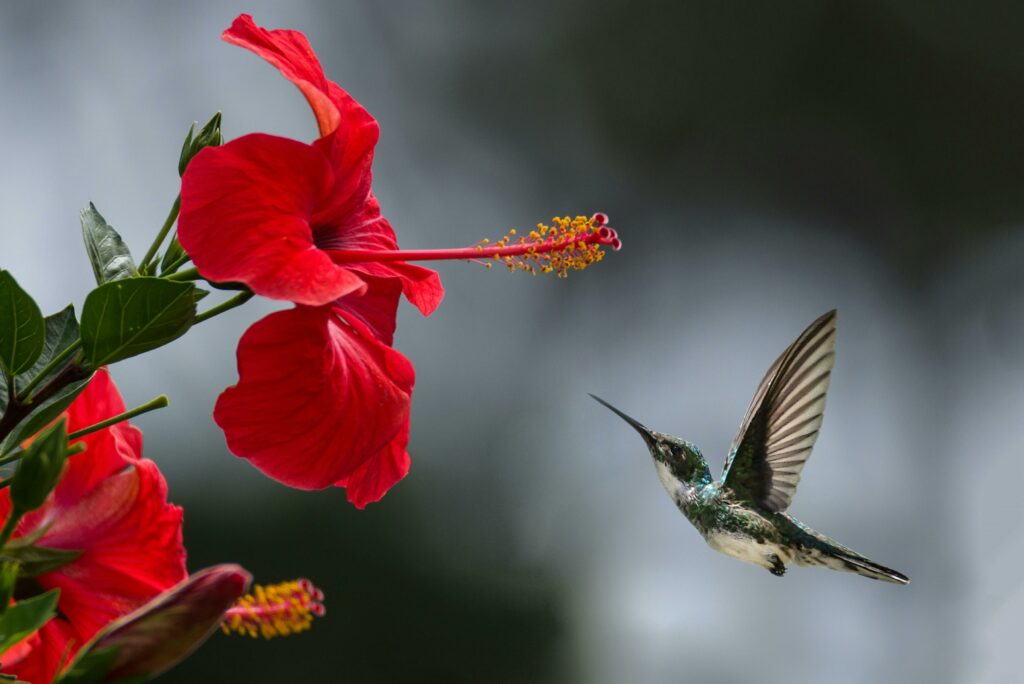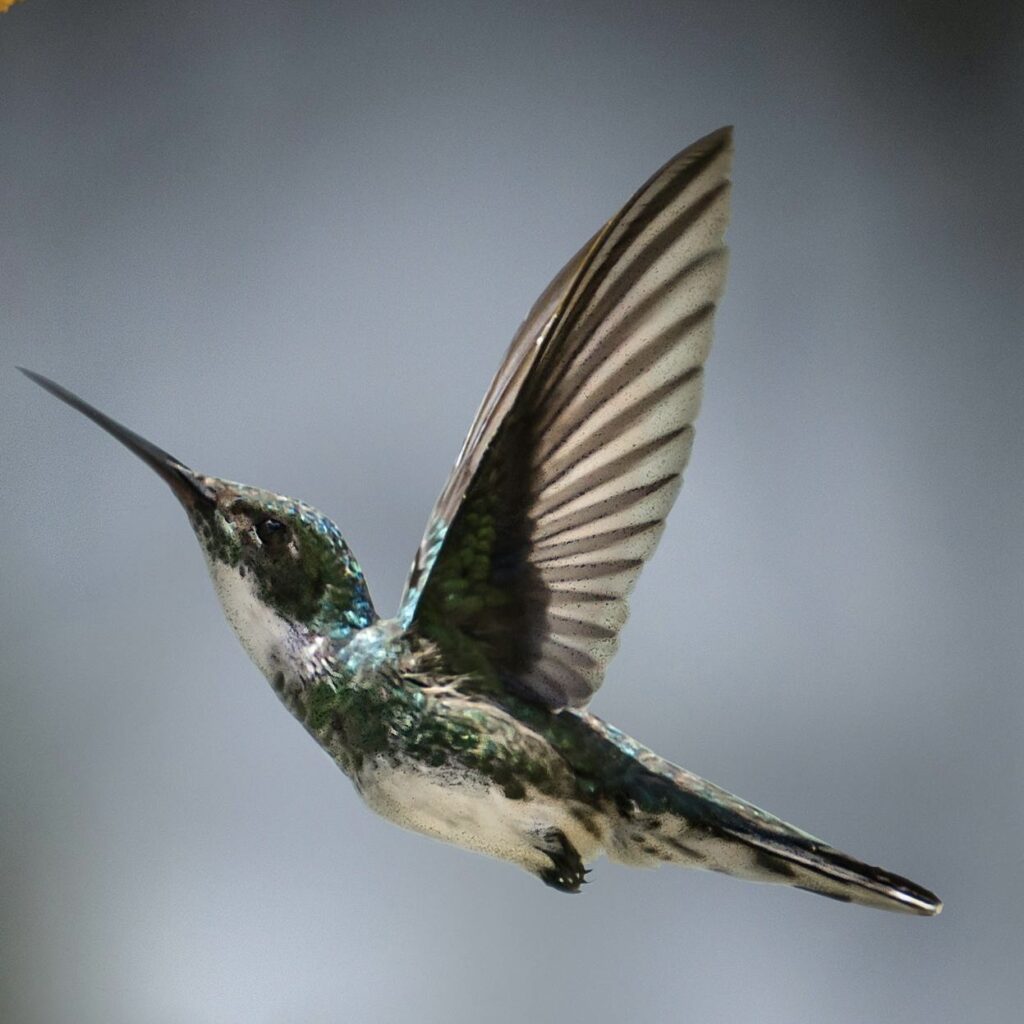
“Brown Hummingbird Selective Focus Photography.”, Philippe Donn, (2018, March 28) Pexels.https://www.pexels.com/photo/brown-hummingbird-selective-focus-photography-1133957/

“A Focused Brown hummingbird .”, Chrislene Perceval, 2025. Pexels. https://www.pexels.com/photo/brown-hummingbird-selective-focus-photography-1133957/
For this assignment I worked with an image of a brown hummingbird from Pexels, and I cropped it to enhance the composition and emphasize the details from the Hummingbird. The original image beautifully captured the bird, but I felt that the wide shot didn’t do justice to the intricate beauty of the hummingbird in flight. The background elements were a bit distracting, and the bird seemed lost in the larger frame.
I decided to crop the image to focus more closely on the hummingbird, eliminating the unnecessary background and highlighting the bird’s delicate wings and feathers. By applying the rule of thirds, I repositioned the hummingbird slightly off-center to create a more dynamic composition, it’s as if the bird is flying to something, and that leaves room for imagination as to what.
The cropping concepts featured in my derivative would be:
- Emphasizing the focal point: By cropping tightly around the hummingbird, I ensured the viewer’s attention is immediately drawn to its wings and face, which are the most interesting and intricate parts of the photo.
- Simplifying the background: The crop removes distracting elements and focuses solely on the subject.
- Rule of thirds: The bird is now positioned off-center.
This exercise helped me understand the power of cropping to not only refine the composition but also to tell a more focused and dynamic story within a single frame. The final image feels more intimate, and the hummingbird is no longer just a part of a wide scene it’s the center of attention, as it should be.


Chrislene, these photos are stunning. Your derivative places all the attention on the hummingbird, allowing its intricate feathers and wing detailing to be the focal point of the photo. While the flower is a lovely addition in the original, the meaning shifts completely over to the bird with this crop.
I think another way this image could have been cropped is if the entire top third was removed, and the hummingbird was solely on the right third of the photo while we still get a glimpse of the flower on the left two-thirds – this would allow the audience to see what the bird is flying towards, and gives meaning to why it is facing that direction.
Since your final image features the hummingbird alone, I would suggest increasing the saturation so its green feathers can pop through.
Oh I like this! This crop to the image really makes the change from the original picture’s meaning of by an informative system with the bird and flower to something that focuses solely on the bird. It is really helped by the image was had a high enough resolution that the bird did not come off as too pixelated. I honestly dont have really anything to add that would enhance or change the image. You set out with a purpose in mind and you achieved it!
The new crop significantly shifts the narrative. The original image told a story of the hummingbird in motion towards the flower, while this one focuses more intently on the hummingbird itself. The image could have even been cropped on just the flower itself. It’s interesting that you mentioned the rule of thirds. While the original image does have elements that align with it, the hummingbird’s eye is currently positioned a bit low on the left third. Moving the crop slightly to position the eye closer to the intersection of the top left grid lines might create an even stronger focal point and a more balanced composition, although that is subjective, and could risk cropping out important details. Ultimately, both the original and the cropped versions have their own stories.